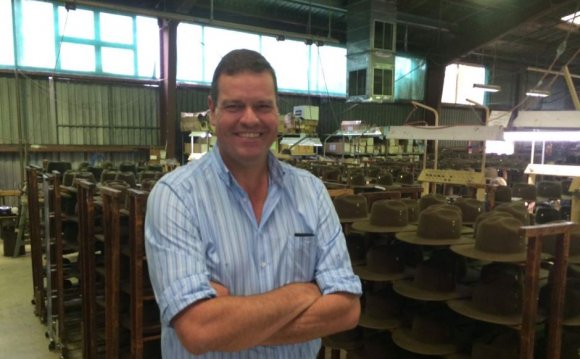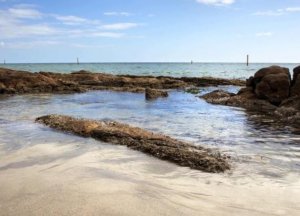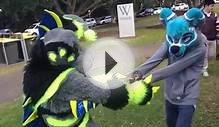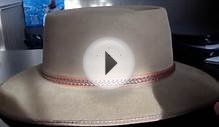
 KEMPSEY, Australia (AP) — The image is seared into Australian lore: Under a hot desert sun, a mounted soldier pours the last of his water into his slouch hat to share with his best friend, his horse.
KEMPSEY, Australia (AP) — The image is seared into Australian lore: Under a hot desert sun, a mounted soldier pours the last of his water into his slouch hat to share with his best friend, his horse.
For countless Australians over the past 130 years, Akubra hats have not just been a fashion statement, but an integral part of life. The Akubra, an Aboriginal word meaning "head covering, " has provided Australians protection from the country's harsh elements, its fur felt blocking the scorching sun and holding back the rain.
Akubra hats hold the same place in Australian folklore as Stetson cowboy hats do in the American West. They symbolize life in the Outback and a rugged self-reliance that is still a source of pride for Australians, even if many have moved to a more comfortable lifestyle in the city.
Making the Akubra started as a family business, and remains so to this day.
Shortly after arriving in Australia in 1874, Briton Benjamin Dunkerley settled in the island state of Tasmania and set up a modest hat factory. In 1904 he invited a fellow hat-making Brit, Stephen Keir, to join the company. Keir married Dunkerley's daughter Ada the next year.
The business moved to Sydney and in 1912 started using the trade name Akubra to market its hats. The word "Akubra" is now very much a part of Aussie vernacular and is often used colloquially to refer to all broad-brimmed hats worn by farmers.
When World War I broke out, the company became one of two suppliers that produced the famed slouch hat worn by the Australia and New Zealand Army Corps soldiers, and it's still the major supplier for Australian troops. Today the business is run by Keir's great-grandson, Stephen Keir IV.
A process involving hot water, pressure and friction makes the rabbit-fur hats impervious to water.
Processed fur is fed into blowers that remove unwanted hair and dirt, leaving behind a soft blanket of downy-like cotton. Then the fur is sucked onto a large revolving cone while hot water is sprayed onto it, binding the fibers together and making the felt one of the world's strongest fabrics. The felt is passed through roller presses dozens of times before workers dye, mold, shape, soften and smooth each hat. Stitching in the sweat bands and trimming the interior complete the process.
Milliner Robert Carroll, manager of Akubra's only retail store, Strand Hatters in Sydney, says they are selling more hats than ever before.
"Men are wearing hats more now, " Carroll says. "They like accessories, they like to look good and they're looking after themselves a bit better."
More than 40 styles in varying colors make up their range of hats, including "The Stockman" and "The Cattleman." None may be as famous as "The Great White Shark."
Worn and promoted by former world No. 1 golfer Greg Norman, known as "The Shark, " the hat gained popularity and took the small family-owned company to international fame. In recent years, Akubra hats were used by medal presenters at the Olympics and worn by world leaders at the Asia-Pacific Economic Cooperation forum in Australia.
Related: Australia commits to clean energy:
More from AOL.com:
The year in photos: Asia-Pacific
Unbelievable holiday lights displays
Pets rocking ugly Christmas sweaters
new website http://sv-barrisol.ru/
YOU MIGHT ALSO LIKE









